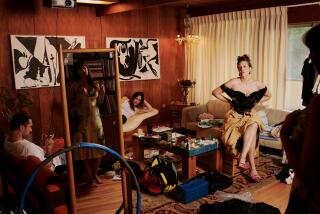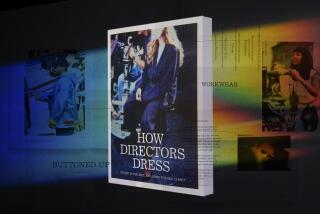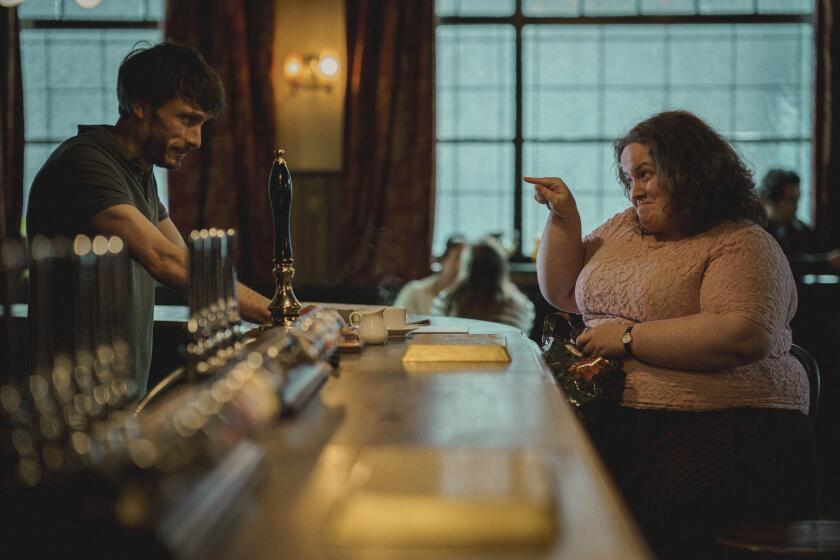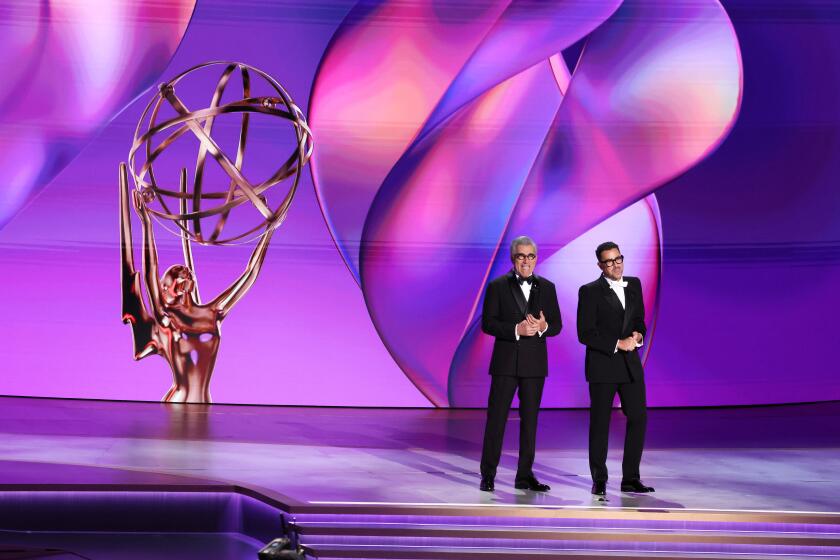Q&A: Jacqueline Durran creates ‘Mr. Turner’ clothes with a lived-in look
Director Mike Leigh’s “Mr. Turner” has won high praise for its portrayal of Britain’s early 19th century master “painter of light” J.M.W. Turner, played by Timothy Spall. Working within England’s Romantic period, Oscar-winning costume designer Jacqueline Durran outfits Turner, in the last 25 years of his life, in dark and muted clothes. That palette allows the eye to be drawn instead to his at-the-time controversial depictions of “surrounding light.” Besides, “that’s how real people wear their clothes,” Durran says. “That was important, to have it seem lived in.”
This is your sixth film with director Mike Leigh. Does this make it more or less interesting for you as a designer?
They never get boring, ever, really, because [directors] are so different in their approach to costume.
With Joe [Wright, with whom she worked on “Pride & Prejudice” and “Anna Karenina”], we have a conversation early on and stylization is quite set out. But the way Mike works is it’s all actor-driven; the characters are developed by the actors themselves through [improvisational] rehearsals, from birth really through when they end. So actors hold the keys.
There comes a point when the actors are ready and I consult with them, as it doesn’t make sense to discuss what they’re wearing earlier on in their life while they’re building the character. My job during this time is to gain as much knowledge as I can about the period and then we craft the silhouettes. The approach is much more organic.
The clothes in this film were not stylized, spotless, perfectly pressed just so; they appeared more lived-in, much as real clothes. Did you like the effect?
That’s right; we wanted them to look like real clothes and how they were worn in real life. There were only about 10 portraits of Turner, and one was quite glamorous when he was young, the others were showing a kind of heavier, stocky man who wore his coat a bit long; there wasn’t a lot of historical images even though he was an historical figure.
Timothy Spall’s clothes were made — his were the only ones in the film since the budget was so small. And very early on we decided that even though the time frame of the film was about 25 years we didn’t want Turner’s character to have changes to his silhouette every five years, which would have been quite distracting.
So I gave him the same silhouette throughout with one minor exception: When he was living with Mrs. Booth, the neighbors called him Admiral, so I gave him a bit more of a naval look, though I don’t think many people would have noticed. I think that worked well, making it more seamless with the focus on character as we wanted.
The film’s costume color palette was more muted, letting it recede into the background somewhat. It also showcased the surrounding light, which, of course, was what Turner as an artist was all about. Was this deliberate?
Right. But again, so for instance Dorothy Atkinson [portraying Hannah Danby, Turner’s servant], she might say, “I don’t think Hannah would wear it this way; it seems a bit fussy for her.” Then I interpret and work out what she said and what that means. Again, it’s a very organic process, which includes color. That’s how it is: You work out together how the character will inhabit their world. The actors have the inner knowledge and create the way things exist for them in this world.
Do the actors like this, with the weight of everything on their shoulders so to speak?
Of course; it’s their world, they love it!
Do you find you do your research for various projects in mainly the same ways and types of places? Or is it all specific to each film?
It depends, really. With “Anna Karenina” I had a conversation with Joe and he wanted a certain look, of the ‘50s in there, and so I go about trying to solve that conundrum, and yet it’s also finding out about how people really wore clothes in that time period, in their world. I’m reading a book now [from the Victorian era], and in it the author says, “She went out into the garden without her bonnet.” I can’t help but noticing it, because in a film of that time period, you wouldn’t have a character go outside without her bonnet. It’s often about getting past those things and seeking what people truly wear and how they actually inhabit their world.
Can you know when you begin a film, or soon after as you begin work on it, which films will garner awards for the costumes?
No, I think there are certain films that lend themselves to it, but you don’t really know. Films that display a lot of costumes, period costumes, with large scenes like ballrooms and gowns, they tend to be recognized even though it might not be harder to make five big ball gowns than a modern piece. For example, I think Sandy Powell did a fantastic job in “Wolf of Wall Street,” but it wasn’t recognized. And there are just too many variables with movies, and how a film will do itself, to ever really know.
More to Read
From the Oscars to the Emmys.
Get the Envelope newsletter for exclusive awards season coverage, behind-the-scenes stories from the Envelope podcast and columnist Glenn Whipp’s must-read analysis.
You may occasionally receive promotional content from the Los Angeles Times.





